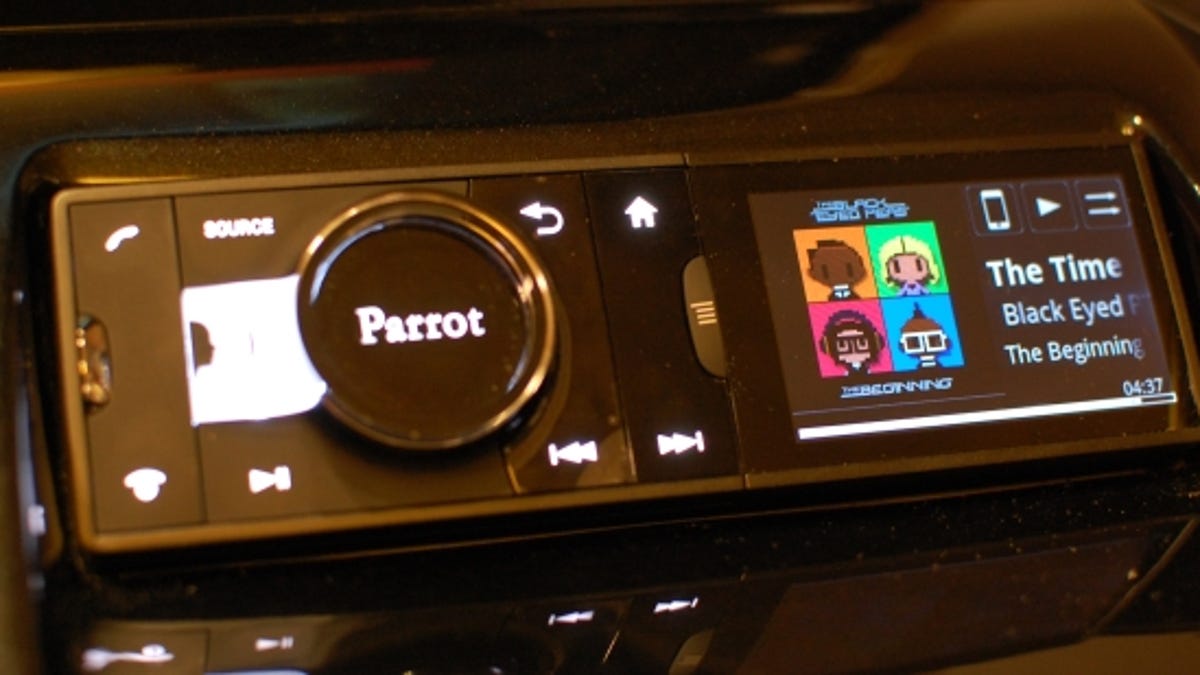Parrot launches Android-based car audio receiver, we go hands-on
Parrot's latest car audio receiver is based on Google's Android OS, but you couldn't tell that just by looking at it.

Remember the Parrot Asteroid that was previewed at CES 2011? It was to be the first car audio receiver to be based on Google's Android mobile operating system. Well, it's here and I got my hands on it.
Like no Android device I've ever seen
Although the Asteroid is based on Android 1.5, you wouldn't be able to tell just by looking at it. The interface of the single DIN unit looks nothing like any Android device that you've likely ever seen. It's been heavily simplified and optimized for in-car use. Half of the unit's face is covered by a full-color 3.2-inch TFT display, while the rest is occupied by the physical controls. There are dedicated buttons for telephony, audio source selection, and voice command. A large rotary controller with a central button alternates between volume control and interface navigation. Finally, the unit's Android roots show in the Back, Menu, and Home buttons.
Gone are the desktop and app-drawer UI metaphor and the touch sensitivity. The Home menu is navigated with the rotary controller for selecting from available apps, which show up as large icons on the 3.2-inch display. I thought that I'd miss the touch sensitivity, but the single DIN form factor and physical controls were surprisingly intuitive. I was able to quickly jump between audio sources and applications with ease.
Parrot is probably best known for its Bluetooth hands-free calling hardware, which the Asteroid makes use of. The unit includes an external microphone for voice calls with echo cancellation and noise reduction technology. For units that support the Bluetooth PBAP address book sync profile, you can also use voice control to initiate a phone call by simply speaking the name of the intended recipient. Incoming calls are also spoken aloud using the Asteroid's text-to-speech engine.
I was surprised when Parrot's representatives whipped out an iPod Touch and connected it to the Asteroid, but it was explained to me that although the unit is based on Android, the developers wanted to make it as device-agnostic as possible. To that end, Parrot has made available a number of audio sources, including four USB ports for mass storage devices (one of which is a dedicated iPod/iPhone input), Bluetooth audio streaming (A2DP), an SD card slot, an analog auxiliary audio input, and AM/FM radio. When using the Asteroid with an iPod, USB device, or SD card media, you can take advantage of the same voice command system to initiate audio playback by speaking the name of an artist or album.
Custom apps for a custom OS
Six core applications will be preinstalled on the Asteroid out of the box. The first is a scaled-down version of Google Maps, with which you can search for local points of interest and get directions. However, this version of Google Maps does not offer live-updating turn-by-turn directions, but rather the manually advanced version that is present on pre-1.6 Android devices and iPhones. Additionally, an app called Roadtrip is a secondary POI search app with a focus on tourism. After selecting a POI in Roadtrip, for example the Golden Gate Bridge, you can read a Wikipedia description, view photos, or get directions from within this app. An app called Wikango provides user-generated speed and red-light camera warnings and traffic data, and users can report traffic jams and new cameras. Weather forecasts, Internet radio via the TuneIn app, and integration with Parrot's TextFriendly service for spoken e-mail and text messaging round out the Asteroid's apps.
You can take advantage of Android's multitasking ability to, for example, run Wikango in the background to receive alerts while viewing the map or audio source on the screen. As with most Android devices, holding the home button brings up a list of the six most recently used apps.
Nearly all of these apps will require Web connectivity, which the Asteroid is ready to receive, but does not include out of the box. Users will need to provide their own USB 3G/4G modem or tether to a smartphone via Bluetooth. Users will also need to connect the USB GPS receiver to enable location-based services like Maps. Fortunately, that bit of hardware is included with the unit.
While browsing the Asteroid's menu, we came across an App Installer icon. Parrot has also announced today that it is making an SDK available for its heavily customized version of Android. This should enable third parties to develop their own Asteroid apps to add more functionality to the unit.
The Parrot Asteroid will be available in October at a Pioneer AppRadio fighting MSRP of $349. We should have a unit in our test car for a full review at about that time, so stay tuned for more details.

